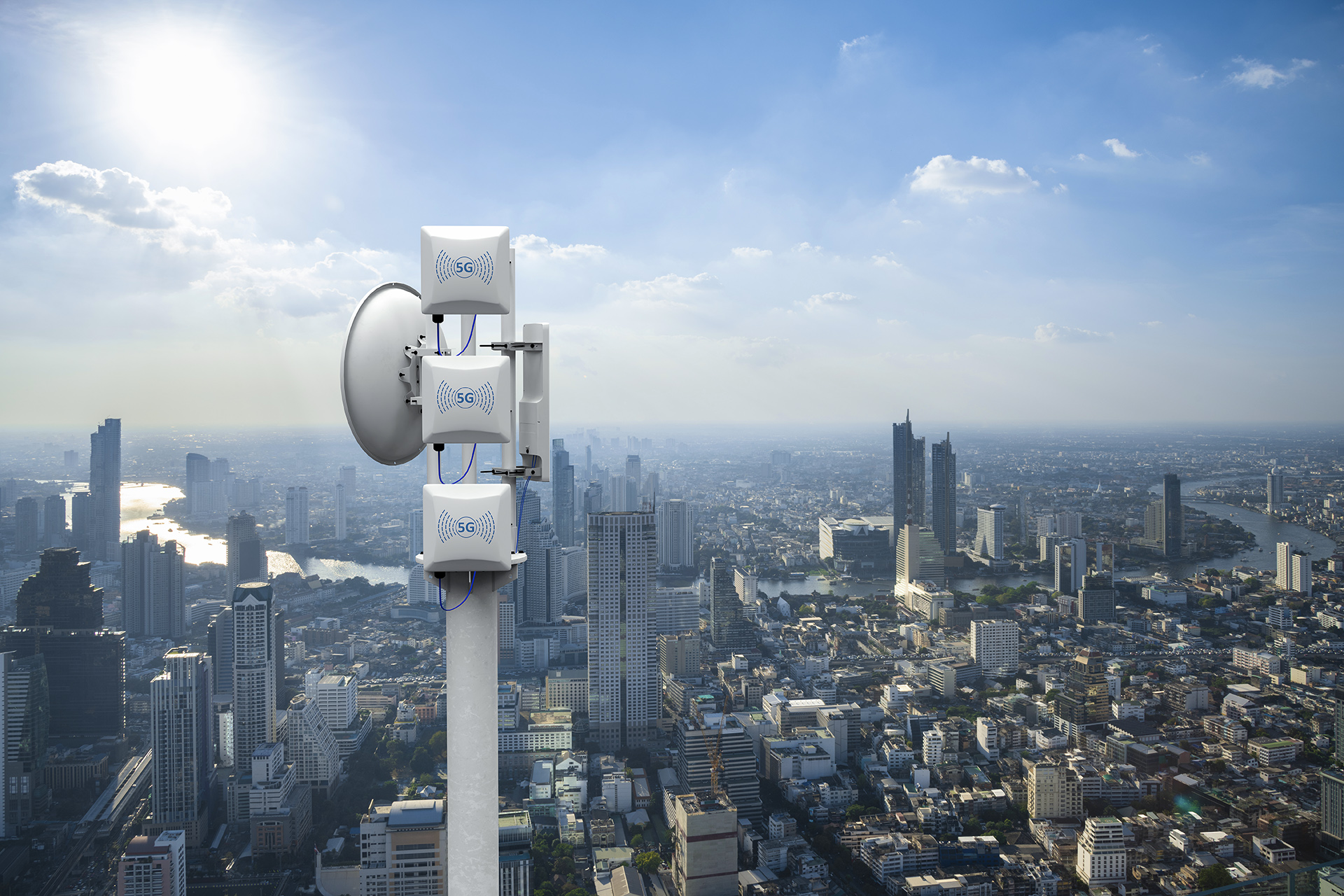As entire industries are facing incredible shifts in terms of digital transformation, the telecommunications industry is certainly not an exception, in which enterprises must confront massive barriers in the macro context.
Digital transformation has had a great impact on telecommunications service providers, starting with the emergence of OTT or over-the-top services (services provided on the Internet that are not directly from a telecommunications service provider, such as WhatsApp, Skype, or Netflix). Additionally, consumers tend to seek an optimal and upgraded experience according to their changes in habits, behaviors, and needs. For this reason, the telecommunications industry has witnessed a sharp decline in revenue from core traditional services such as voice calling and messaging, along with stiff competition from suppliers in recent years. In order to compete as well as offset the traditional services’ disadvantages, the telecommunications businesses are forced to make strong transformation steps. In other words, customer-centered is believed to be the appropriate and effective entrepreneurship that is able to satisfy diverse customer requirements with advanced and creative services.
The digitization of content and services has boosted innovation, flexibility, and competitiveness among companies and service providers. Therefore, telecommunications service providers cannot continue to maintain the usual operation principle. In fact, no organization is immune to transformation, as innovation is the key to keeping a firm running and safeguarding it from the negative impacts. To put it differently, the industry has made digital transformation a priority due to its rapid growth of modern technology. As customer touchpoint channels, content, and telecoms services migrate to digital platforms, a fresh and more valuable ecosystem is being created, which has resulted in a significant structural upheaval for the telecommunications industry. In specific, service providers are attempting to fulfill customer expectations by utilizing the possibilities delivered by high-performance networks, for example IoT (Internet of Things) and Big Data, Artificial Intelligence, Cloud Computing and Cybersecurity.
5G Network – Strong Digital Transformation Facility
The way that people communicate must have changed as a result of the “online world” revolution, which has occurred over the previous ten years. Particularly due to its portability and simplicity, constant smartphone use is preferred. Among 3 billion Internet users globally, the majority describe smartphones as their primary Internet access point (1). Moreover, portable devices are also helpful for managing critical tasks in users’ lives in addition to using the Internet.

Therefore, the development of 5G and broadband networks is essential to gaining momentum for addressing user needs and serving as a base to ensure a seamless digital transformation. Particularly, infrastructural advancements in 5G and broadband promise enhanced services, including (2):
- Data speeds up to 100x faster than 4G, instant access to services and apps with download speeds up to 20GB/s.
- Network latency will be reduced to 1 millisecond from the current 200 milliseconds in 4G.
- Expand access data volume by 1,000 times.
Many developed countries have successfully installed and used 5G in a wide range of applications. This is also the scenario in Vietnam in 2020, when network operators have started to manufacture infrastructure equipment, mastered 5G technology, deployed 5G in a few locations, and produced positive results. By 2021, Vietnamese telecom companies intend to introduce 5G technology, which promises to offer mobile users outstanding experience, as well as a platform to promote digital transformation for businesses and develop the country’s economy, on a broad scale (3).
Digital transformation trends in the industry
Internet of Things and Big Data
First of all, it is becoming more and more popular to implement IoT solutions in the telecoms industry in order to more promptly and thoroughly satisfy customers’ basic needs. Through wireless networks (wifi) or broadband telecommunications networks (3G, 4G, and 5G), IoT helps connect all gadgets, such as home appliances or manufacturing machinery systems, with one another. The system’s connected devices have the capacity for communication, mutual understanding, and the ability to respond in the most synchronized and timely manner. IoT is expected to bring in US$1.8 trillion in revenue for mobile network operators by 2026, according to the GSMA (4). Telecommunications firms can benefit from this technology’s prospects and create contemporary processes and creative applications that contribute breathough revenue.
Furthermore, big data analytics is a significant aspect influencing the future of the telecommunication market to meet the strict needs of businesses and customers. Telecom firms may sync and gather large amounts of data that is crucial to their operations by using IoT technologies. To be more precise, telecoms can obtain important insights into customer behavior and usage by using Big Data analytics to the data collected from IoT sensors, thereby building predictive models to forecast the future with the right service bundles, enhancing client contact and experience.

For example, Alexa – a voice control device developed by Amazon. In addition to helping customers with regular activities including finding movie schedules, paying bills, or putting online orders, Alexa can also interact with smart home appliances to create a smart home. The majority of the home’s appliances are connected and have remote controls. They can be configured to conserve energy, simplifying and improving life, such as heating that is coordinated with external temperature sensors to reduce energy use or owners have voice control over household appliances,… Moreover, big data will allow the system to evaluate information regarding a user’s device usage habits, allowing it to become smarter and better at anticipating demands, providing the proper services, and updating existing applications to include more user-friendly features.
Artificial Intelligence (AI)
Besides meeting the increased need for higher service quality and a better customer experience, telecom service providers must deal with issues such as network system complexity, excessive resource utilization, throughput, congestion and delays, network and transmission errors, and raising bandwidth requirements in order to completely meet market demand. Moreover, AI technology is used to process the enormous quantity of data received from customer bases using the service and payment data, specifically from devices, networks, mobile applications, geographical locations, etc. Accordingly, the telecom companies are able to extract actionable insights and deliver better customer experiences, improve operations, and boost revenue through new products and services. Generally, with the capacity to assist in managing, optimizing, and maintaining infrastructure and customer support activities concurrently, the application of artificial intelligence has determined its power as one of the industry’s newest trends. In particular, examples of application cases where AI has impacted the market consist of network optimization, predictive maintenance, virtual assistants, and Process Automation Robots (RPA), improving customer experience and adding value for the organization as a whole.
An instance in terms of applying AI in telecom industries can be mentioned is TechSee’s integrated visualization platform, which is used by telecom operator Vodafone to pilot remote customer support technology, powered by AI and AR. Hence, Vodafone resellers may more conveniently view customer scenarios and resolve technical issues thanks to TechSee’s integration. In specific, due to remote technical advancement by Vodafone, many activities that once required sending technicians directly to the customer’s site may now be performed remotely when employee members serve as virtual technicians. This resulted in a 68 percent boost in customer satisfaction at Vodafone dealers in the UK as well as a reduction of up to 26 percent in Vodafone’s outbound trouble rate (5).
Cloud Computing and Cybersecurity
Indeed, to deliver a wide range of applications, handle data, and bill for services, the majority of telecom service providers rely on mainframe infrastructure. To compete in the quickly evolving network environment, they must continuously innovate and upgrade their offerings. Also, the current telecommunications providers have faced many challenges because of the phenomenal growth in video and mobile traffic, which has compelled them to concentrate on launching new goods and services that will raise customer satisfaction, lower service costs, and improve their ability to respond quickly to changing market demands. Therefore, it becomes necessary to change the old network design and invest in telecom operators’ cloud computing to increase agility and lower operational costs. Along with the more conventional benefits of increasing internal efficiency, cloud computing technology makes it possible to switch from a product-based model to a service-based model known as Saas (software-as-a-service), which can use the features of the current traditional telecommunications infrastructure to manage transactions and services bringing significant benefits. Furthermore, businesses in the telecommunications industry can take advantage of cloud computing to expand into new markets.
However, businesses must be aware of security risks whether they are using cloud computing platforms or employing technologies for information technology system infrastructure. With efficient and inexpensive access to specialized tools for attacking telecommunications networks, cybercriminals and other threat actors poses serious cybersecurity issues. In general, cyber assaults often fall into one of two categories: direct attacks that target telecom network activities or indirect attacks that compromise subscriber data. In the light of the explosive emergence of new technologies and the demand for digital and IoT, market factors have driven telecom operators to transform from being physical network companies to Cloud Computing providers, causing frequency of attack surface by telecommunications companies, cyber risk as well as cyber attacks. The threators, unfortunately, can steal confidential data, inject malware into certain customer branch networks, infiltrate or infect malicious code to gain and control, attack on a large scale in disrupting economic zone operations once network access is gained. As a consequence, telecommunications network security teams are required to stay up-to-date while keeping abreast of new threats and vulnerabilities.
To sum up, it is obvious that the telecommunications industry is evolving more quickly than ever due to the dramatic changes in digital technology, including the development of the 5G network to support Internet of Things applications, th gathering and analysis of big data or artificial intelligence into different types of services, and cloud computing services. Especially, since the quality and living standards of people are increasingly improved with the support from machines, Vietnamese corporations are catching up on the trend, implementing new technologies in all aspects to promote development, in order to build a better position in the market and to be able to provide the best services to customers. In fact, if a business simply remains stationary and refuses to act prior to this modernization, it could easily be eliminated. Nevertheless, as these technologies advance, cybersecurity concerns are growing every day. For this, telecommunications carrier businesses must constantly upgrade and monitor to make sure there are no security flaws that could harm users of the service.
Reference:
1) iLink. 2020. 7 Top Digital Transformation Trends Shaping the Telecom Industry in 2020.
(2) Hitachi Vantara. 2019. Transform Telecom: A data-driven strategy for digital transformation.
(3) Mr. Tran Duc Lai, Chairman of Vietnam Radio-Electronic Association. 2021. Workshop on Development of 5G and Broadband Infrastructure contributes to promoting digital transformation in Vietnam.
(4) GSMA. 2017. GSMA Highlights US$1.8 Trillion IoT Revenue Opportunity for Mobile Network Operators.
(5) TechSee. 2021. Global Innovator Vodafone Partners with TechSee for AR Remote Assistance.





